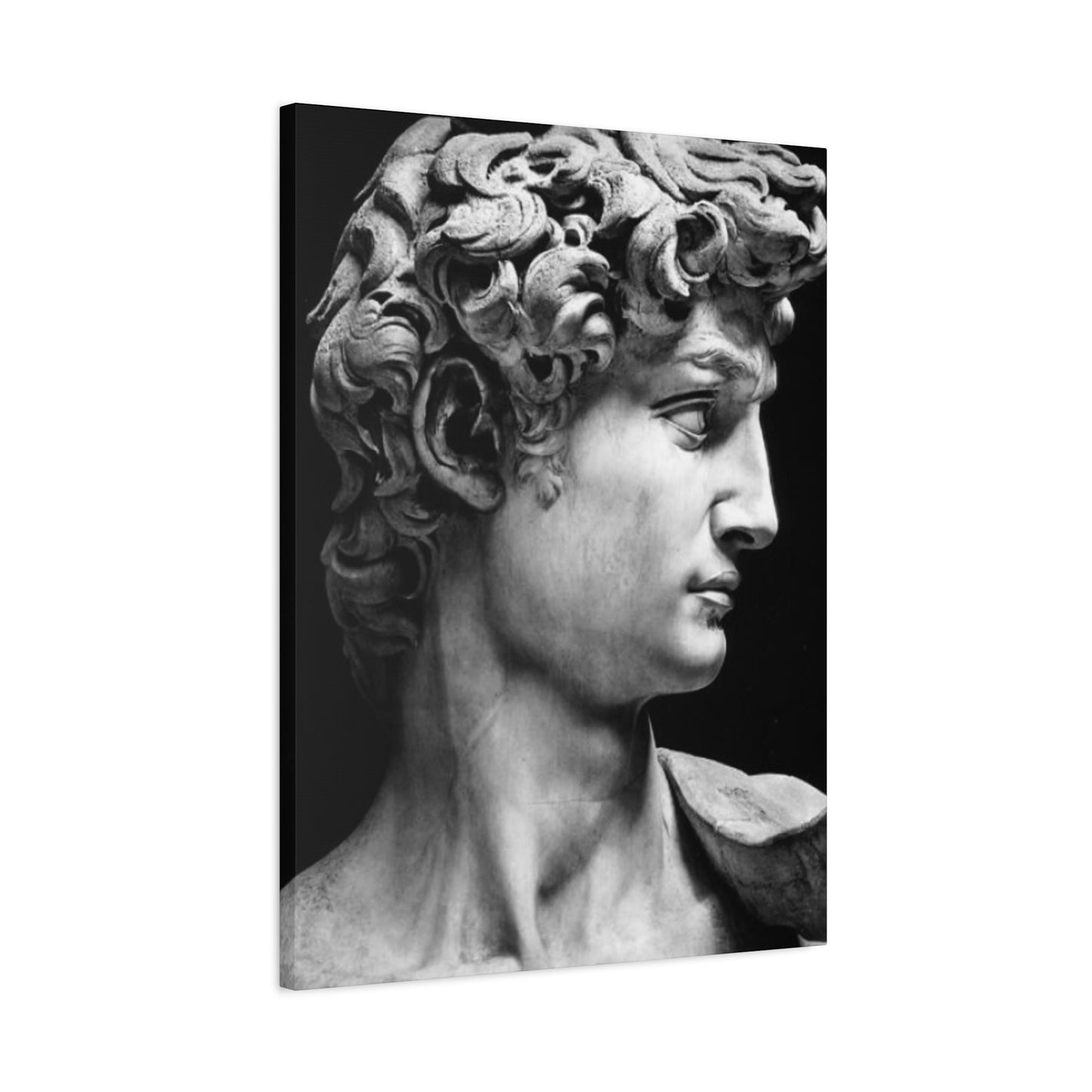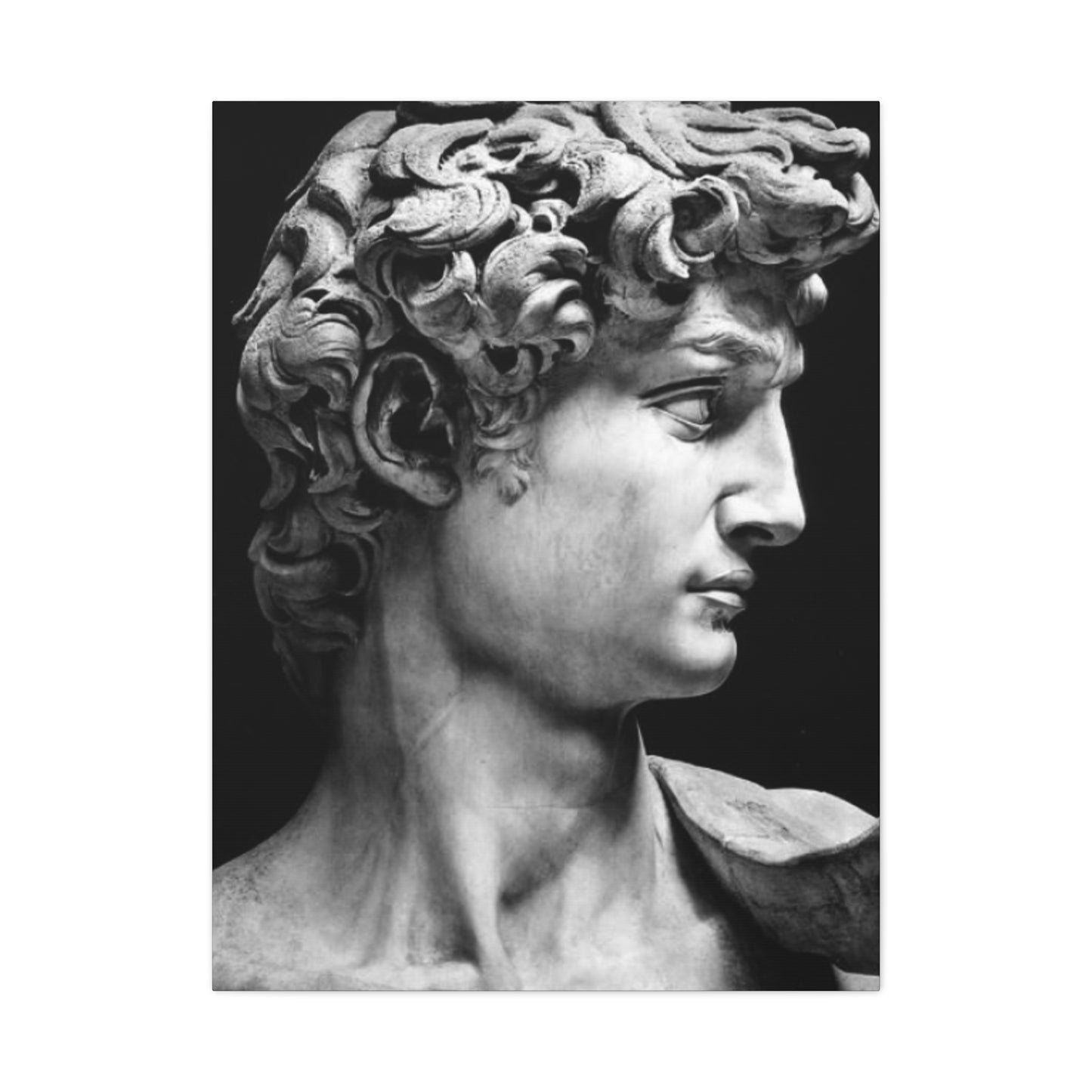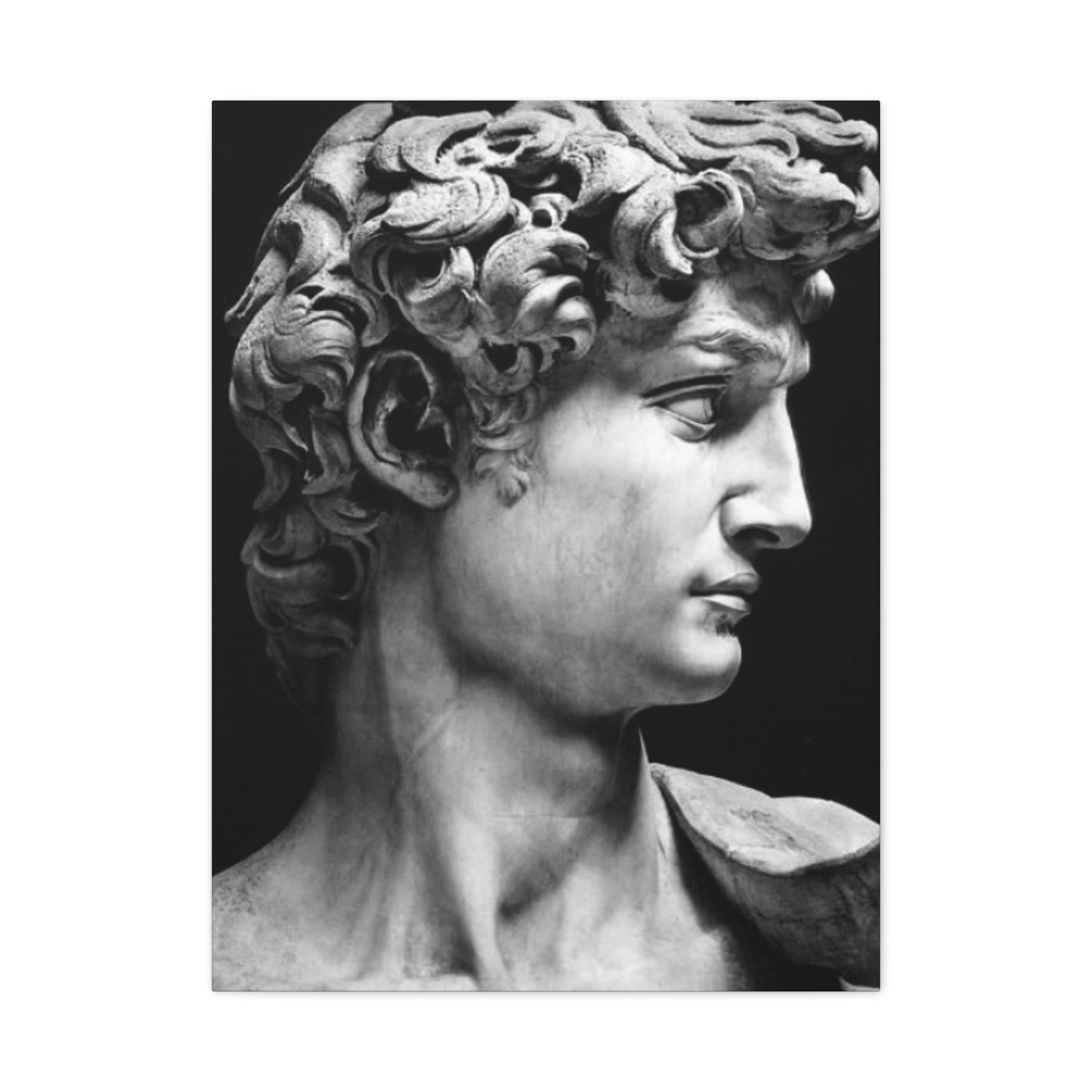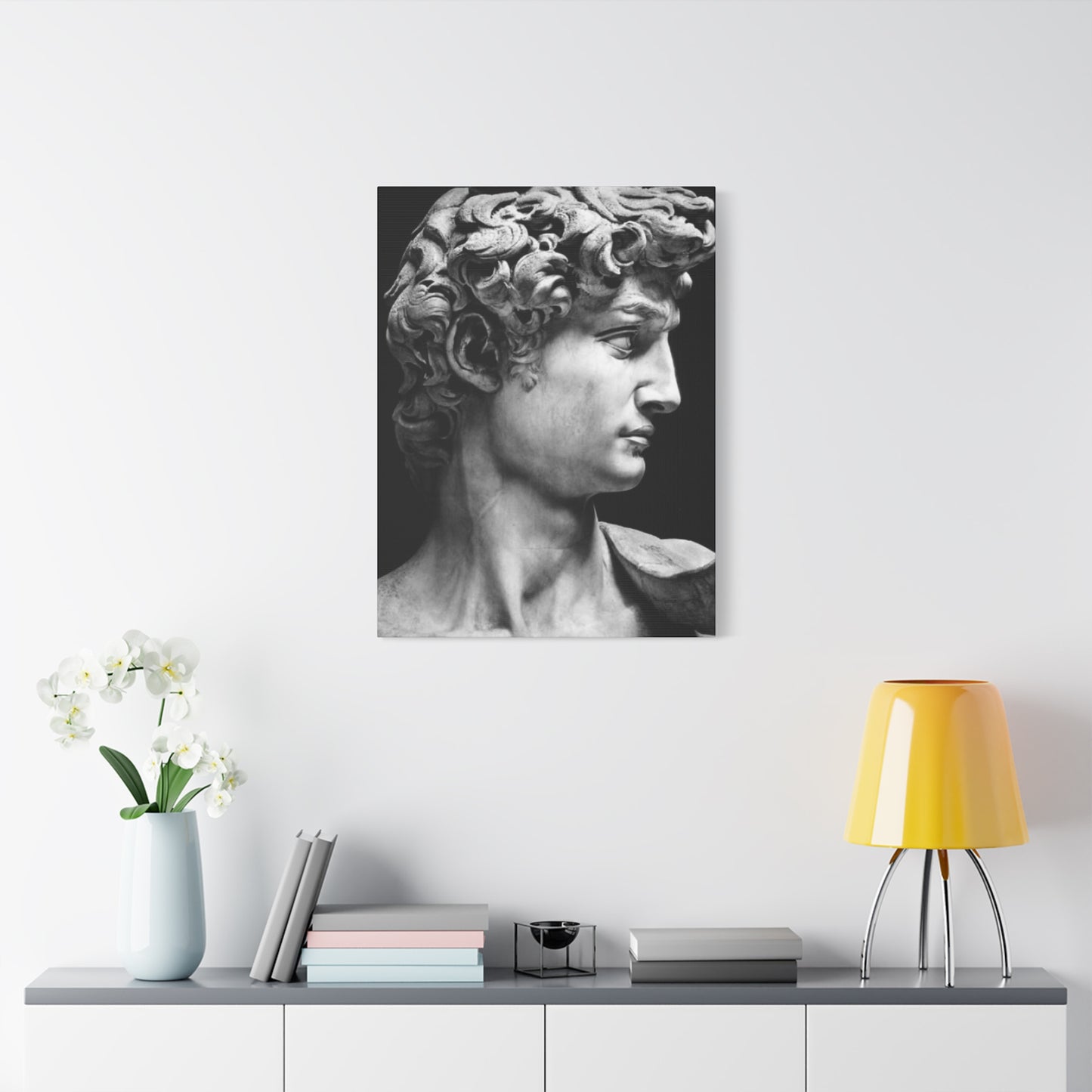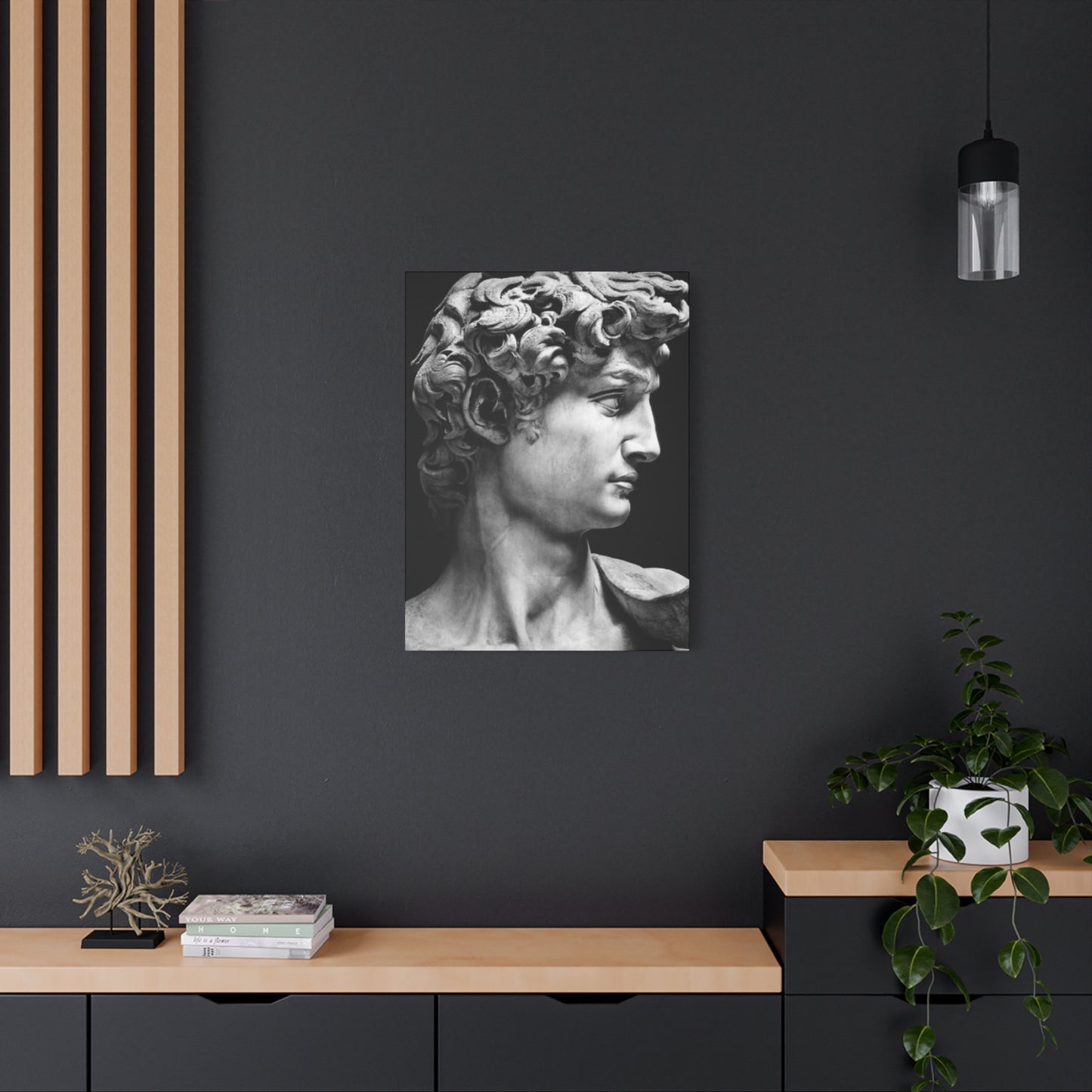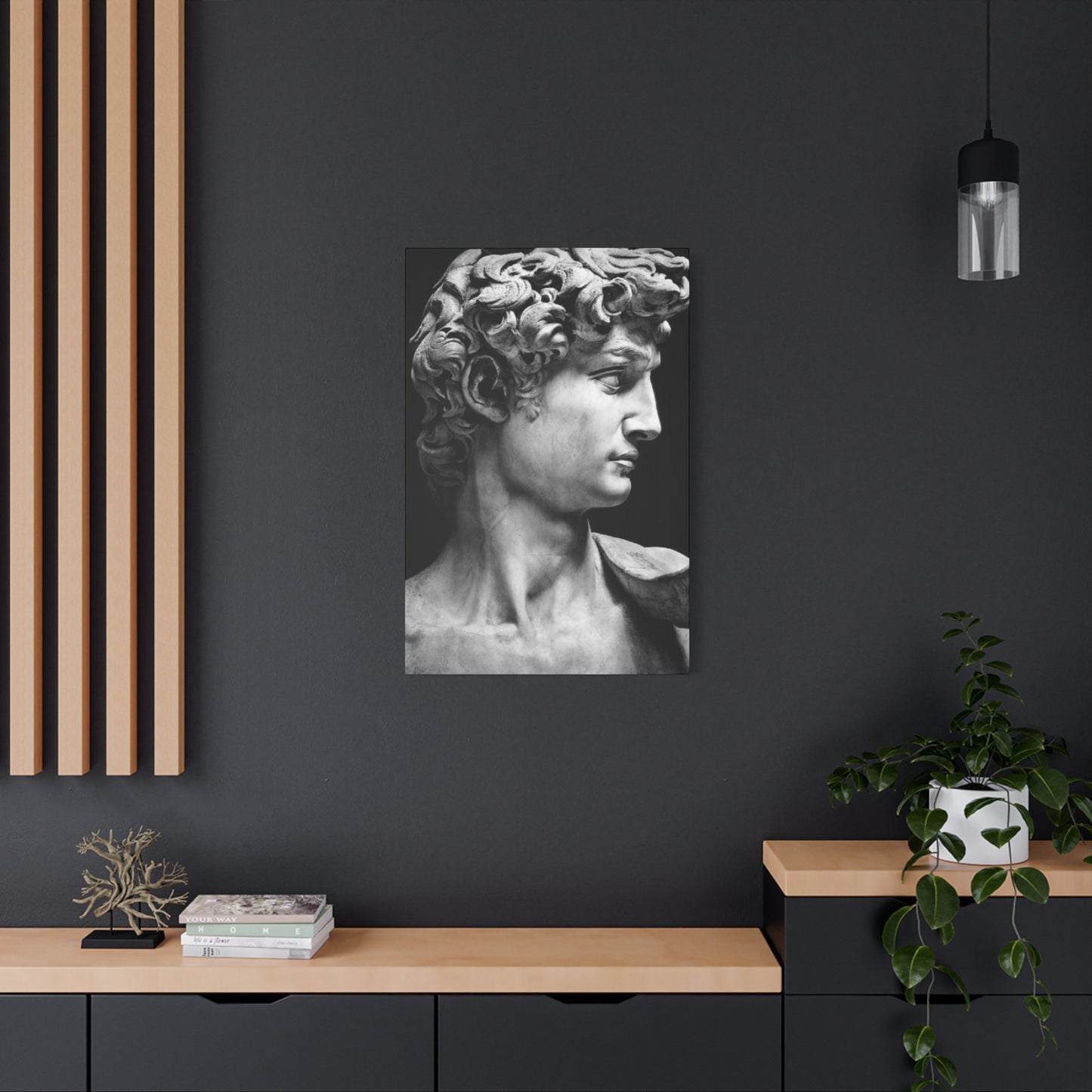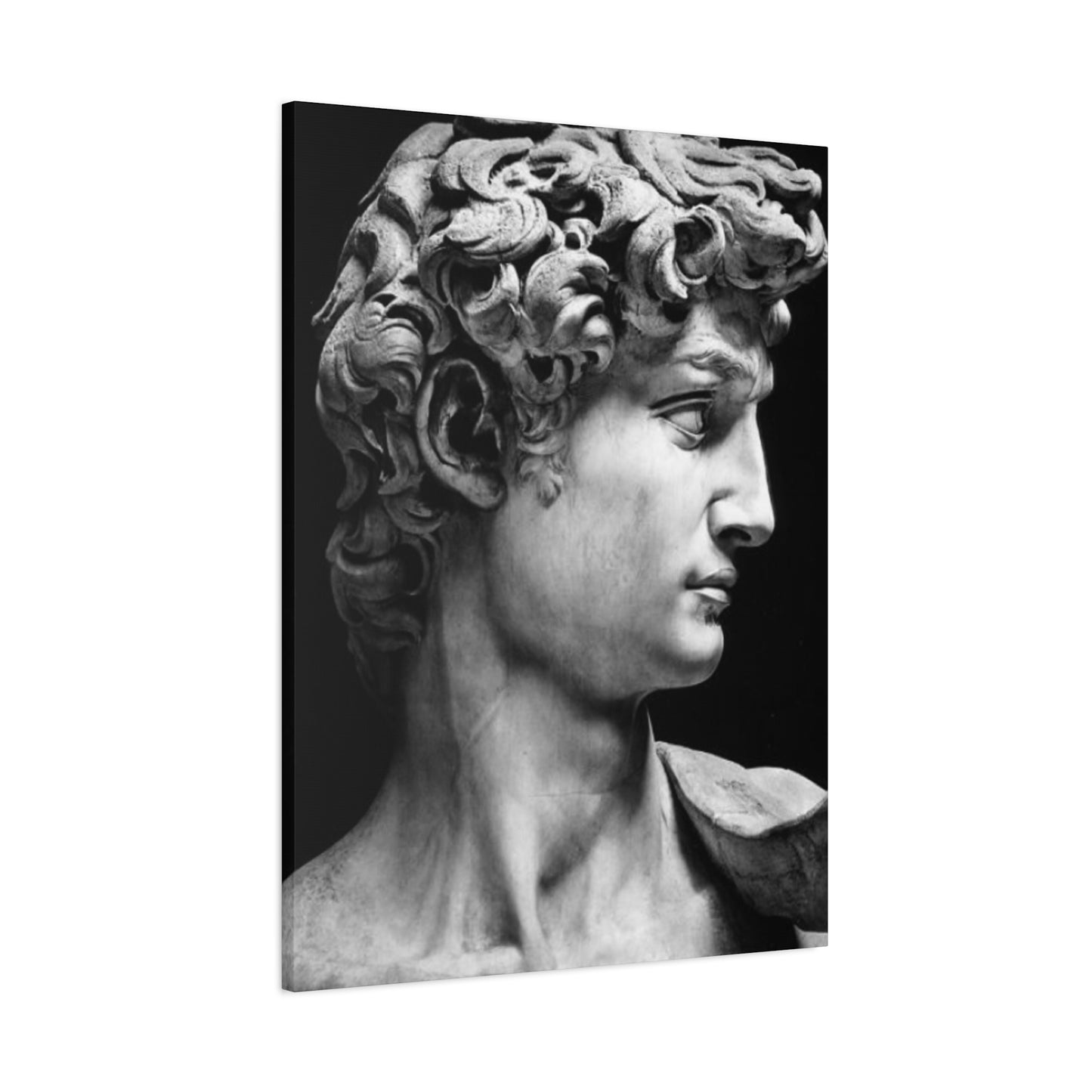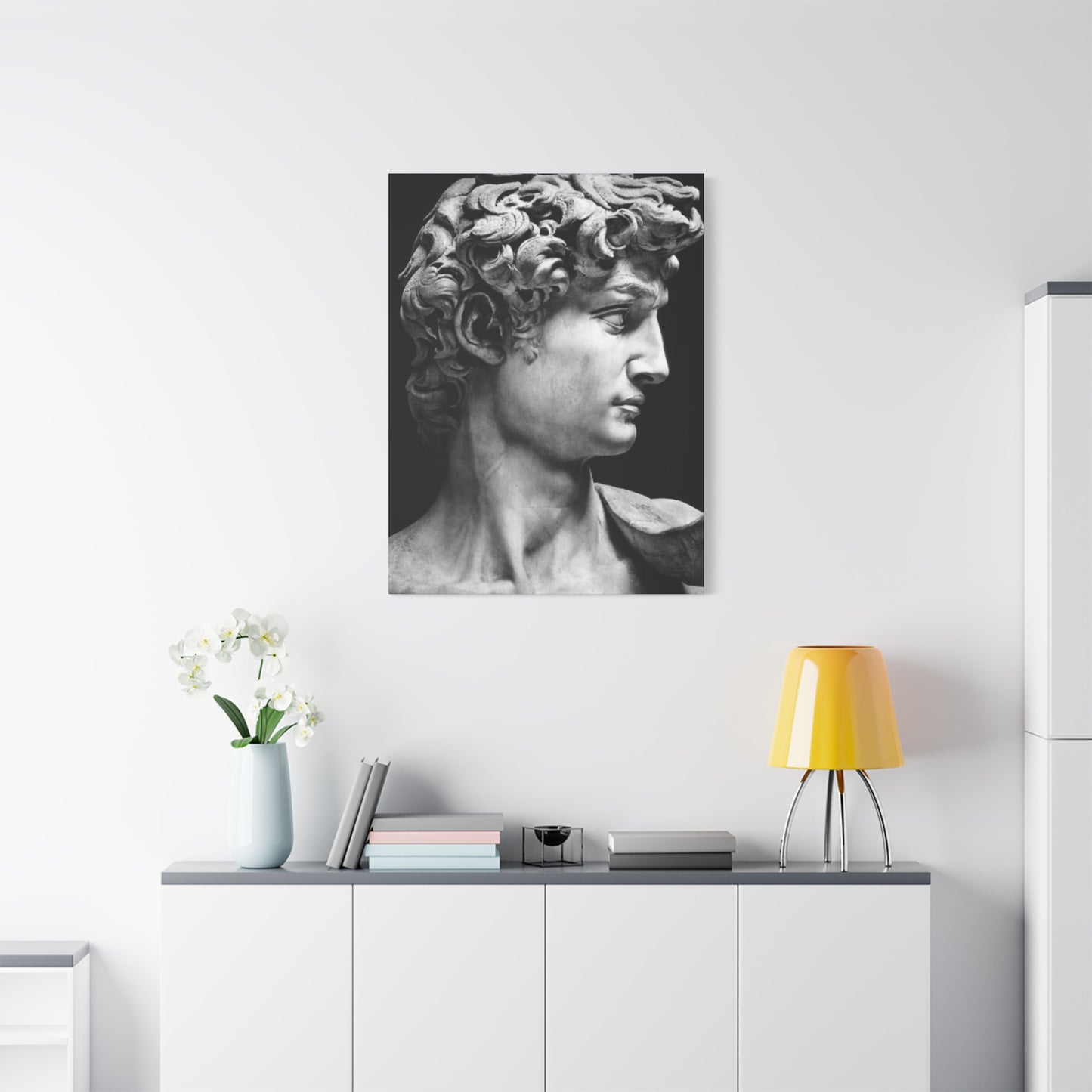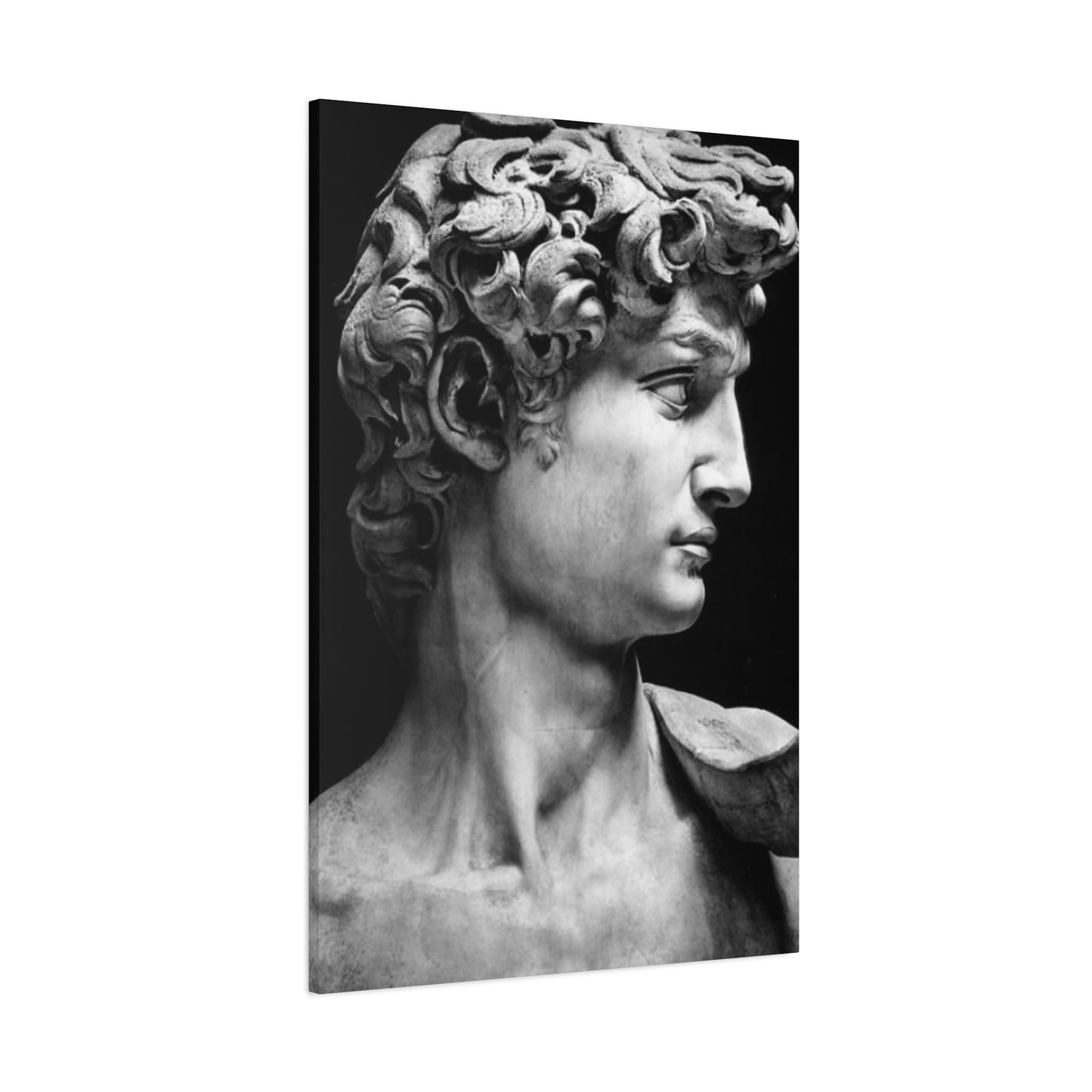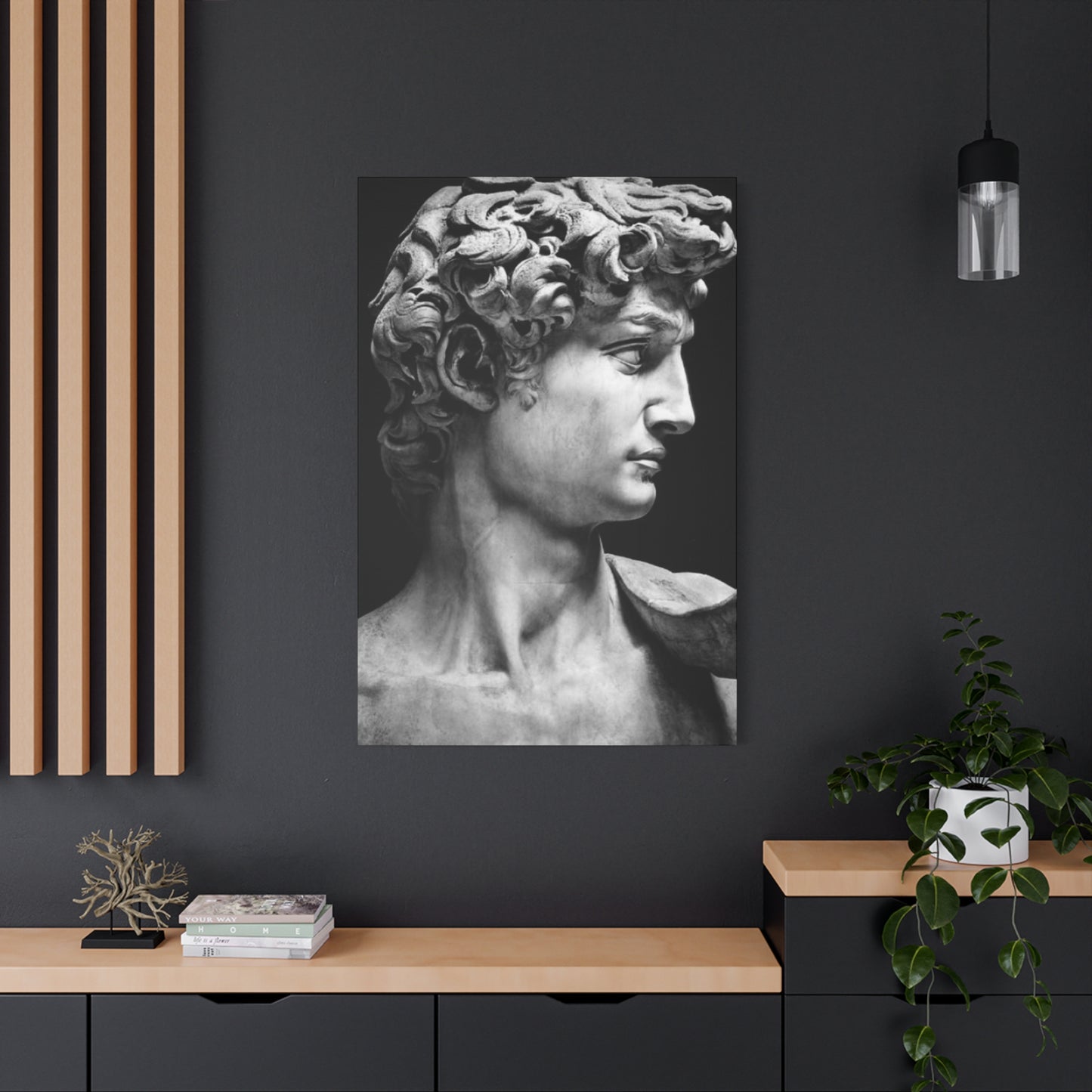David Oil Painting Modernism Wall Art: A Contemporary Exploration of Biblical and Classical Themes
The intersection of classical biblical narratives and modernist artistic approaches has created a fascinating dialogue in contemporary art spaces. When examining David oil painting modernism wall art, we encounter a rich tapestry of historical reverence meeting innovative visual expression. This artistic movement represents more than mere decoration for residential or commercial spaces; it embodies a cultural conversation spanning millennia, reinterpreted through the lens of twentieth and twenty-first century aesthetic sensibilities.
David in Artistic Representation
The story of David has captivated artists for centuries, making him one of the most frequently depicted figures in Western art history. From his humble beginnings as a shepherd boy to his legendary confrontation with Goliath, and eventually his reign as king of Israel, David's narrative arc provides endless inspiration for creative minds. Traditional representations often emphasized his youth, courage, and divine favor, typically rendered in styles that reflected the artistic conventions of their respective eras.
Renaissance masters approached David with idealized proportions and classical composition techniques that celebrated human form and divine grace simultaneously. These early interpretations established visual vocabulary that subsequent generations would both honor and challenge. The muscular tension in Michelangelo's marble David, the contemplative stance in Donatello's bronze version, and the dramatic moment captured in Bernini's Baroque sculpture all contributed to a collective artistic memory that modernist painters would later deconstruct and reimagine.
Moving into the modern era, artists began questioning these traditional representations, seeking fresh perspectives that resonated with contemporary audiences experiencing rapid social, technological, and philosophical changes. The advent of modernism brought with it a rejection of purely mimetic representation, embracing instead abstraction, emotional intensity, and conceptual depth. This shift created opportunities for reinterpreting biblical narratives like David's story through expressionist, cubist, surrealist, and other avant-garde approaches that prioritized subjective experience over objective representation.
Modernism's Influence on Biblical Imagery
Modernism fundamentally altered how artists approached sacred and historical subjects. Rather than serving primarily devotional or educational purposes, modern interpretations of biblical scenes became vehicles for exploring universal human experiences: courage in adversity, the individual versus authority, youth challenging established power, and moral conviction facing seemingly insurmountable odds. These themes resonated deeply with modernist concerns about individual authenticity, existential meaning, and social transformation.
The modernist movement encompassed numerous stylistic approaches, each offering distinct possibilities for reimagining David's narrative. Expressionist techniques emphasized emotional intensity through distorted forms, vivid colors, and gestural brushwork that conveyed psychological states rather than physical accuracy. Cubist approaches fragmented the figure into geometric planes, presenting multiple perspectives simultaneously and challenging viewers to reconstruct meaning from visual complexity. Surrealist interpretations explored the unconscious dimensions of heroism, fear, and destiny through dreamlike imagery and unexpected juxtapositions.
Abstract modernism pushed even further, sometimes reducing the David narrative to its essential formal elements: the arc of a sling, the vertical thrust of confrontation, the horizontal finality of victory. Color became symbolic rather than descriptive, with emotional associations taking precedence over naturalistic representation. Composition emphasized dynamic tension, asymmetry, and spatial ambiguity that reflected modern uncertainty and complexity.
Characteristics of David Oil Painting in Modernist Style
Oil painting remains the preferred medium for many artists working with modernist interpretations of classical subjects. The versatility of oil paint allows for both subtle gradations and bold impasto textures, enabling artists to work across the spectrum from refined detail to gestural abstraction. The slow drying time permits extensive manipulation, layering, and revision, qualities particularly valuable when exploring complex conceptual territory.
In modernist David paintings, color often departs dramatically from naturalistic representation. Instead of rendering flesh tones accurately or depicting historically appropriate clothing colors, artists might employ vivid expressionist palettes that convey emotional states. A David figure might appear in brilliant oranges and reds to suggest passion and courage, or cool blues and greens to emphasize spiritual dimensions and divine guidance. These chromatic choices transform the painting from historical illustration into psychological exploration.
Compositional strategies in modernist David paintings frequently reject traditional centralized, balanced arrangements. Figures might be dramatically cropped, positioned at extreme angles, or fragmented across the canvas. Negative space becomes as important as positive forms, creating tension and directing viewer attention in unexpected ways. The relationship between David and Goliath might be suggested through abstract forms rather than literal representation, with scale, color, and texture conveying the power dynamic more effectively than anatomical accuracy.
Brushwork in these modernist interpretations ranges from smooth, deliberate application to wild, spontaneous gestures. Some artists employ palette knife techniques that build thick, sculptural surfaces, while others use thin washes that allow canvas texture to show through. These technical choices contribute significantly to the emotional impact and conceptual content of the work, making the painting process itself visible and meaningful.
Symbolism and Metaphor in Contemporary David Imagery
Modern interpretations of David's story often layer multiple symbolic meanings onto the basic narrative framework. The sling becomes more than a weapon; it represents innovation, unconventional thinking, and the power of intelligence over brute force. The stone symbolizes faith, precision, and the transformative potential of seemingly insignificant elements. Goliath embodies not just physical threat but systemic oppression, entrenched power structures, and the intimidating force of conventional wisdom.
Contemporary artists mining this imagery for wall art frequently draw parallels between David's ancient challenges and modern struggles. The narrative becomes applicable to social justice movements, individual battles against corporate or governmental power, artistic innovation confronting commercial pressures, or personal courage facing life's overwhelming difficulties. These metaphorical extensions make David oil painting modernism wall art particularly relevant for contemporary spaces, where viewers seek meaningful connections between aesthetic objects and lived experience.
Color symbolism plays a crucial role in these layered meanings. Gold tones might reference divine presence or the corruption of material wealth, depending on context. Darkness could represent either evil threatening the righteous or the unknown potential from which heroism emerges. Red might signify violence and bloodshed or passion and vitality. This symbolic ambiguity invites viewers into interpretive participation, making each encounter with the artwork a personalized experience.
Abstract elements within figurative compositions serve symbolic functions as well. Geometric shapes might represent order versus chaos, circles suggesting completeness or entrapment, triangles indicating stability or conflict. Lines become vectors of energy, movement, and relationship. Texture differentiations can distinguish between earthly and spiritual realms, conscious and unconscious dimensions, or material and ideal planes of existence.
Technical Approaches to Oil Painting in Modernist Tradition
Creating David oil painting modernism wall art requires mastery of both traditional oil painting techniques and modernist conceptual frameworks. Artists must understand color theory deeply enough to employ it expressively rather than merely descriptively. They need compositional skills that can structure complex visual relationships while maintaining dynamic tension and viewer engagement. Technical proficiency with the medium allows for the full range of effects from transparent glazes to opaque impasto.
The underpainting phase in modernist work often establishes the emotional and energetic foundation for the finished piece. Some artists begin with gestural marks in complementary colors that will vibrate through subsequent layers. Others create detailed monochrome underpaintings that provide structural guidance while allowing chromatic freedom in final layers. These foundation stages reflect conceptual decisions about the relationship between structure and spontaneity, intention and accident.
Layering techniques in oil painting enable the complex visual depth characteristic of successful modernist work. Transparent glazes over opaque passages create luminosity and atmospheric effects. Scumbling techniques drag lighter opaque colors over darker layers, creating broken color effects and textural interest. Wet-into-wet approaches allow colors to blend directly on the canvas, producing transitions and color mixtures impossible to premix on the palette.
Modern artists working with David imagery often employ mixed media approaches, incorporating collage elements, textural additives, or unconventional tools alongside traditional oil paint. Sand, fabric, paper, or other materials might be embedded in paint layers to create tactile surfaces that emphasize the painting's physicality. Unconventional application tools like squeegees, sponges, or even fingers produce marks distinct from traditional brush strokes, expanding the visual vocabulary available for expression.
Color Theory in Modernist David Paintings
Color functions as a primary expressive element in modernist approaches to David imagery. Rather than serving merely to identify objects or create spatial illusion, color carries emotional, symbolic, and structural weight. Understanding how modernist artists employ color theory principles helps viewers appreciate the sophistication beneath what might initially appear as arbitrary or purely decorative choices.
Complementary color relationships create visual vibration and emotional intensity. Placing orange against blue or red against green generates optical effects that activate the viewer's visual system, producing sensations of energy, conflict, or dynamism appropriate to David's confrontational narrative. These complementary pairings might represent the opposition between David and Goliath, good and evil, or divine and earthly realms.
Analogous color schemes, using colors adjacent on the color wheel, produce harmonious, unified effects that can convey spiritual dimensions or inner psychological states. A painting using primarily blues, blue-greens, and greens might emphasize the meditative, faithful aspect of David's character, his trust in divine guidance rather than martial prowess. Warm analogous schemes of reds, oranges, and yellows could stress passion, courage, and the fiery confrontation with seemingly insurmountable challenges.
Value contrast, the relationship between light and dark, creates compositional structure and focal emphasis. Modernist painters might employ dramatic value patterns that echo Baroque theatrical lighting or flatten value ranges to emphasize color relationships over three-dimensional illusion. Strategic placement of lightest lights against darkest darks draws attention to critical narrative moments or symbolic elements while allowing other areas to recede into ambiguity.
Temperature relationships between warm and cool colors guide viewer attention and suggest spatial relationships without relying on traditional perspective systems. Warm colors typically advance visually while cool colors recede, allowing artists to create spatial depth through chromatic means alone. In David paintings, this might manifest as warm oranges and reds for the figure pushing forward pictorially while cool blues and grays suggest atmospheric distance or spiritual dimensions.
Compositional Strategies in Modernist Wall Art
Composition in modernist David oil paintings often deliberately violates academic conventions to create tension, surprise, or conceptual emphasis. Rather than centralized, pyramidal stability, these works might employ dramatic diagonals, asymmetrical balance, or even intentional compositional instability that mirrors the narrative's inherent conflict and unpredictability.
The rule of thirds, a fundamental compositional guideline, gets both employed and subverted in modernist approaches. Placing key elements at the intersection points of imaginary lines dividing the canvas into thirds creates natural visual interest. However, modernist artists might intentionally place important elements in unexpected positions, forcing viewers to work harder to navigate the visual field and thereby increasing engagement and memorability.
Negative space receives careful consideration in successful modernist compositions. Rather than filling the entire canvas with active elements, strategic use of emptiness creates breathing room, emphasizes positive forms through contrast, and can carry symbolic meaning. In David imagery, vast empty spaces might represent the psychological isolation of the hero facing his challenge, the divine void from which courage emerges, or simply provide visual rest that makes active areas more impactful.
Movement and direction within the composition guide viewer attention through the visual narrative. Lines, both explicit and implied, create pathways for the eye to follow. In a David painting, the arc of the sling might sweep through the composition, connecting foreground and background, figure and space. The implied trajectory of the stone creates anticipation and narrative tension. Gestural brushstrokes can suggest energy and action that transcends static representation.
Scale relationships within the composition convey psychological and narrative information. Traditional approaches depicted Goliath as physically larger to represent his intimidating presence, but modernist interpretations might reverse this, making David dominant to emphasize his spiritual or moral superiority. Alternatively, both figures might be reduced to small elements within vast spaces, suggesting the cosmic or existential dimensions of their confrontation.
Expression and Emotion in Modernist Biblical Art
Modernism prioritized subjective emotional experience over objective representation, making it particularly suited to exploring the psychological dimensions of biblical narratives. David's story involves intense emotions: fear and faith, determination and doubt, divine connection and earthly vulnerability. Modernist painting techniques excel at conveying these interior states through formal means.
Expressionist approaches emphasize emotion through distortion, exaggeration, and gestural intensity. Facial features might be simplified or distorted to convey essential emotional states rather than individual identity. Body language becomes dramatic and symbolic, with postures suggesting psychological states as much as physical actions. The painting surface itself carries emotional content through aggressive or gentle handling, rough or smooth textures, chaotic or ordered mark-making.
Color choices communicate emotion directly, bypassing rational interpretation to affect viewers viscerally. The psychological effects of color are well documented: reds stimulate and agitate, blues calm and cool, yellows energize, greens balance. Modernist artists exploit these responses, creating emotional environments through chromatic orchestration. A David painting dominated by violent reds and oranges creates a very different emotional experience than one emphasizing serene blues and purples, even if depicting the same narrative moment.
Ambiguity and suggestion often prove more emotionally powerful than explicit depiction. Rather than showing every detail, modernist approaches might employ abstraction, leaving viewers to complete the image mentally. This participatory aspect creates personal investment and allows individual emotional responses to shape the experience. A partially abstracted David figure invites viewers to project their own understanding of heroism, courage, or faith onto the image.
The tension between representation and abstraction itself generates emotional resonance. When viewers recognize a familiar subject rendered in unfamiliar ways, cognitive dissonance produces engagement and memorability. The struggle to reconcile abstract formal elements with representational content mirrors David's own struggle, creating a metaphorical parallel between viewing experience and narrative content.
Modernist David Paintings
David oil painting modernism wall art serves multiple functions in contemporary interior spaces. Beyond aesthetic appeal, these works bring cultural gravitas, narrative interest, and symbolic depth to residential and commercial environments. Understanding how these paintings function within interior design contexts helps both creators and collectors make informed decisions.
In residential settings, modernist David paintings can anchor living rooms, dining areas, or private studies with commanding presence. The narrative content provides conversation opportunities, inviting guests to engage with familiar stories presented through fresh perspectives. The formal qualities of color, composition, and texture contribute to the room's overall aesthetic while maintaining individual impact that prevents the work from fading into background decoration.
Scale considerations significantly affect how these paintings function in spaces. Large-scale works create dramatic focal points that dominate their environments, establishing the visual hierarchy for entire rooms. Medium-sized pieces offer significant presence without overwhelming other design elements, allowing integration into more complex decorative schemes. Smaller works can cluster in groupings, creating gallery wall arrangements that build cumulative impact through repetition and variation.
Color coordination between painting and interior palette requires careful consideration. A modernist David painting with bold, saturated colors might anchor a relatively neutral room, providing the primary color interest. Alternatively, the painting's palette might echo existing room colors, creating harmonious relationships that unify the space. Contrasting approaches can also succeed, with painting colors deliberately opposing room tones to create dynamic tension and visual excitement.
Lighting dramatically affects how modernist oil paintings appear and function in spaces. Natural light changes throughout the day, revealing different aspects of color and texture at various times. Artificial lighting requires careful planning to avoid glare on glossy surfaces while adequately illuminating the work. Accent lighting can create dramatic effects, emphasizing texture and creating exhibition-quality presentation in residential contexts.
Thematic coherence matters in spaces where multiple artworks coexist. A modernist David painting might anchor a collection of biblical subjects presented in various styles, creating dialogue between traditional and contemporary approaches. Alternatively, it might join other modernist works regardless of subject, emphasizing stylistic connections over narrative content. These curatorial decisions shape how viewers experience individual pieces within larger visual environments.
Oil Painting Techniques for Creating Depth and Dimension
Creating convincing depth and dimension challenges artists working in inherently flat media like painting. Modernist approaches often embrace this flatness rather than fighting it, but even abstract or semi-abstract works benefit from spatial complexity that engages viewers and prevents monotonous surfaces.
Traditional perspective systems provide one approach to creating spatial illusion. Linear perspective uses converging lines toward vanishing points to suggest three-dimensional space on two-dimensional surfaces. Atmospheric perspective employs color and value shifts to suggest distance, with cooler, lighter, less detailed forms appearing to recede. Modernist painters might employ these systems selectively or subvert them deliberately, creating spatial ambiguities that reflect contemporary experience of fragmented, non-linear space.
Overlapping forms create clear spatial relationships without requiring systematic perspective. When one element partially obscures another, viewers automatically understand their relative positions in space. Modernist David paintings might use overlapping abstract shapes to suggest the layered complexity of experience, with symbolic elements interpenetrating rather than occupying clearly defined spatial positions.
Scale variations suggest depth through relative size, with larger forms appearing closer and smaller forms receding. Modernist approaches might manipulate this expectation, creating ambiguous spaces where scale relationships seem contradictory or impossible, generating tension and conceptual interest. A David figure might appear simultaneously near and far, large and small, through strategic scale manipulation.
Texture differences create depth through visual and tactile variation. Thick impasto passages advance visually and physically, projecting from the canvas surface. Smooth, thin areas recede, creating depth through textural contrast alone. Modernist oil paintings often emphasize this textural dimensionality, making the paint's physical presence an essential aspect of the work's meaning and impact.
Color temperature relationships, as mentioned earlier, create spatial effects without relying on perspective systems. Strategic placement of warm and cool colors generates convincing depth purely through chromatic means. This approach suits modernist sensibilities by emphasizing painting's fundamental elements—color, form, line, texture—over illusionistic tricks.
Abstraction Levels in Modern Biblical Painting
Modernist David paintings span a spectrum from relatively representational to completely abstract, with most occupying middle ground where recognition and invention balance productively. Understanding this spectrum helps artists make intentional decisions about how much information to provide versus how much to leave to viewer interpretation.
Minimal abstraction maintains clear representational elements while simplifying details, adjusting proportions, or intensifying colors beyond naturalistic accuracy. These works remain immediately recognizable as depicting David and Goliath but show clear artistic interpretation rather than photographic literalism. This approach makes biblical narrative accessible while demonstrating contemporary artistic vision.
Moderate abstraction fragments, distorts, or partially dissolves representational elements while maintaining enough visual information for recognition. Viewers might need moments to identify subjects, but the representational foundation remains discernible. Cubist-influenced approaches typify this level, presenting multiple viewpoints simultaneously or reducing figures to geometric components while preserving essential identifying characteristics.
Significant abstraction reduces representational content to minimal cues—a suggested figure, an arc implying motion, color relationships evoking emotional states associated with the narrative. These works require viewer knowledge of the subject to fully appreciate, as visual information alone provides insufficient guidance. The title becomes crucial, directing interpretation toward specific narratives rather than leaving meaning completely open.
Complete abstraction eliminates overt representational content, working purely through formal relationships of color, line, shape, and texture. Even when titled after biblical subjects, these works function as visual music, creating experiences through formal orchestration rather than storytelling. The David narrative becomes inspiration rather than subject, influencing artistic decisions invisibly.
Most successful modernist biblical paintings find productive tension between recognition and mystery, providing enough information for engagement while withholding enough to invite interpretation. This balance creates rewarding viewing experiences that deepen with repeated encounters as viewers notice new relationships and reconsider initial impressions.
Material Considerations in Oil Painting Creation
The physical materials used in creating David oil painting modernism wall art significantly affect both the creation process and final results. Understanding material properties enables artists to make informed choices that support their conceptual and aesthetic goals while ensuring technical soundness and longevity.
Support selection—the surface on which artists paint—offers various options with distinct characteristics. Traditional stretched canvas provides moderate tooth for paint adhesion, flexibility that tolerates impasto buildup, and a familiar working surface. Canvas panels offer more rigid support that prevents flexing, beneficial for heavily textured works. Wood panels provide completely stable surfaces ideal for detailed work but require proper preparation to prevent paint failure.
Priming the support creates a receptive surface for paint adhesion while controlling absorbency. Traditional gesso creates bright, slightly textured grounds that reflect light through subsequent paint layers, contributing to overall luminosity. Colored grounds establish overall tonal relationships and can be allowed to show through final paint layers, unifying compositions chromatically. Transparent grounds preserve support color and texture, affecting the finished appearance.
Oil paint quality significantly impacts working properties and final appearance. Professional-grade paints contain higher pigment concentrations, producing more vibrant colors and better covering power. Different pigments possess unique characteristics: some are transparent, others opaque; some dry quickly, others remain workable for days. Understanding these properties allows artists to choose appropriate colors for specific technical needs.
Medium selection modifies paint consistency and handling characteristics. Linseed oil increases fluidity and transparency while slowing drying time. Stand oil creates enamel-like smooth surfaces without brushmarks. Alkyd mediums accelerate drying, enabling faster layering. Solvents thin paint for washes or cleaning but should be used judiciously due to health and safety concerns. Each medium choice affects both working process and finished appearance.
Brush selection offers countless options for applying paint with different effects. Flat brushes create angular marks and sharp edges. Rounds produce linear marks and organic shapes. Filberts combine flat and round characteristics, offering versatility. Stiff bristle brushes move thick paint and create textured surfaces. Soft synthetic or natural hair brushes enable smooth blending and detailed work. Many modernist painters employ unconventional tools alongside traditional brushes, expanding mark-making possibilities.
Palette knives apply paint with effects impossible to achieve with brushes, creating sharp edges, smooth surfaces, or heavily textured impasto. Some artists use knives exclusively, embracing their distinctive aesthetic. Others integrate knife work with brush painting, employing each tool for specific effects. The choice between additive application (building paint layers) and subtractive techniques (scraping back into wet paint) significantly affects surface quality and visual character.
Modernist Masters and Biblical Subjects
Examining how recognized modernist masters approached biblical subjects provides context and inspiration for contemporary artists working with David imagery. These historical examples demonstrate the range of approaches available and the rich tradition of reimagining ancient narratives through modern sensibilities.
Marc Chagall frequently incorporated biblical themes into his modernist vocabulary, blending folk art influences, emotional color, and floating figures that defied spatial logic. His approach emphasized spiritual dimensions and emotional truth over physical accuracy, creating dreamlike interpretations that resonated with modern spiritual searching rather than traditional religious certainty. Chagall's biblical paintings demonstrate how personal vision and cultural heritage can merge productively.
Georges Rouault brought expressionist intensity to religious subjects, using heavy black outlines reminiscent of stained glass and glowing colors that emerged from dark grounds. His distorted figures emphasized suffering, redemption, and spiritual struggle, making ancient subjects feel urgently contemporary. Rouault's work shows how modernist techniques can intensify rather than diminish religious content's emotional and spiritual impact.
Salvador Dali approached biblical themes with surrealist strategies, creating technically precise but conceptually bizarre interpretations that challenged conventional understandings. His religious works often incorporated scientific imagery, psychological symbolism, and dreamlike juxtapositions that expanded narrative possibilities while maintaining recognizable subjects. Dali demonstrated that radical formal innovation need not abandon representational skill.
Pablo Picasso periodically engaged with religious imagery throughout his career, bringing cubist fragmentation, expressionist distortion, and personal iconography to traditional subjects. His approaches ranged from reverent to skeptical, from celebration to critique, showing how biblical narratives could serve multiple artistic and philosophical purposes without requiring single interpretive positions.
These historical examples show contemporary artists that modernist interpretation of biblical subjects constitutes a rich tradition rather than iconoclastic rebellion. Each generation brings new concerns, techniques, and perspectives to ancient stories, ensuring their continued relevance and demonstrating art's capacity to bridge temporal distances.
Conservation and Longevity of Oil Paintings
Creating David oil painting modernism wall art that endures for generations requires attention to technical soundness and material quality. While artistic vision drives creation, understanding conservation principles ensures that vision remains intact over time.Proper support preparation prevents common failure modes. Canvas must be sized to prevent oil absorption into fibers, which causes eventual brittleness and paint adhesion failure. Wood panels require sealing to prevent moisture exchange that causes warping and cracking. Modern synthetic materials offer stability but require understanding of their specific preparation needs. Cutting corners during preparation creates time bombs that manifest years later as conservation crises.
Paint layer structure affects long-term stability significantly. The principle of fat over lean—applying more flexible, oil-rich layers over less flexible, leaner layers—prevents cracking as paintings age and oil films become increasingly brittle. Thick impasto passages require sufficient drying time before applying additional layers, as insufficient drying traps solvents that eventually cause problems. Patient, methodical layering produces more durable paintings than hasty completion.
Environmental conditions during creation and display affect paintings throughout their existence. Extreme temperature fluctuations cause expansion and contraction that stresses paint films and supports. High humidity promotes mold growth and canvas deterioration. Direct sunlight fades pigments and accelerates oil film oxidation. Controlling these factors through appropriate studio conditions and display environments preserves work for posterity.
Varnishing provides protective layers between paint and environment while unifying surface appearance and saturating colors. Traditional natural resin varnishes eventually yellow and darken, requiring eventual removal and replacement. Modern synthetic varnishes offer greater stability and clarity but still require understanding of proper application techniques and product characteristics. Some modernist artists prefer unvarnished surfaces, accepting faster dirt accumulation for aesthetic reasons.
Documentation provides crucial information for future conservation efforts. Photographing works at completion establishes baseline appearance for future reference. Recording materials used, particularly unusual or experimental ones, helps future conservators make informed treatment decisions. Dating work enables understanding of condition changes relative to age. These simple practices significantly aid long-term preservation.
Psychological Aspects of Creating Art
Understanding psychological dimensions of artistic creation helps artists navigate challenges and sustain productive practice. Creating David oil painting modernism wall art involves not just technical skill but emotional, cognitive, and psychological engagement that affects both process and results.
Creative blocks frustrate artists when inspiration seems absent or execution fails repeatedly. Understanding blocks as normal parts of creative cycles rather than permanent failures helps maintain perspective. Strategies for working through blocks include changing medium temporarily, working in series to maintain momentum, setting minimum time or production requirements regardless of quality, or taking deliberate breaks for regeneration.
Self-criticism serves positive functions when proportionate and constructive but becomes destructive when excessive or perfectionistic. Learning to evaluate work objectively while maintaining self-compassion enables continued growth without crushing confidence. Recognizing that even admired artists create unsuccessful work normalizes struggle and failure as necessary aspects of artistic development.
Flow states occur when skill level matches challenge perfectly, producing effortless absorption in creative activity. These optimal experiences provide deep satisfaction and often yield best work. Understanding conditions that facilitate flow—appropriate challenge level, clear goals, immediate feedback, minimal distraction—helps artists structure practice to maximize these productive states.
Artistic identity develops through sustained practice and reflection on what work means personally and culturally. Artists must reconcile personal vision with market demands, traditional expectations with innovative impulses, spiritual content with aesthetic form. This ongoing negotiation shapes artistic identity and determines career trajectories.
Studio practice routines provide structure that supports consistent production. Whether painting daily for scheduled hours or working intensively in concentrated periods, establishing regular patterns creates framework within which creativity can flourish. Routines reduce decision fatigue about when to work, leaving mental energy for artistic decisions.
Collaboration and community connection combat isolation inherent in studio practice. While painting itself requires solitude, maintaining relationships with fellow artists provides support, feedback, inspiration, and practical assistance. Critique groups, shared studios, and online communities offer various levels of connection that enrich practice without compromising necessary solitude.
Environmental Sustainability in Oil Painting
Growing environmental awareness raises questions about oil painting's ecological impact. Artists concerned about sustainability can make informed choices that reduce environmental harm while maintaining artistic integrity and technical quality.
Solvent reduction or elimination represents the most significant health and environmental improvement available to oil painters. Traditional practices used turpentine and mineral spirits extensively for thinning paint and cleaning brushes, releasing volatile organic compounds that harm health and environment. Water-mixable oils eliminate solvent need entirely while maintaining many traditional oil paint qualities. Alternatively, solvent-free mediums and careful solvent management reduce exposure and environmental release.
Sustainable material sourcing considers how products are manufactured, packaged, and transported. Some pigments require environmentally destructive mining or chemical processes, while others derive from renewable resources. Choosing brands committed to environmental responsibility supports sustainable practices throughout art material industries. Buying supplies locally when possible reduces transportation impacts.
Waste management prevents harmful materials from entering water supplies or landfills. Disposing of solvents, paint waste, and contaminated materials properly protects environmental and human health. Many communities offer hazardous waste collection specifically for such materials. Studios can implement waste reduction strategies like reusing palettes fully, buying appropriate quantities to prevent expiration, and sharing materials with other artists.
Energy efficiency in studios reduces carbon footprint associated with artistic practice. Natural lighting reduces electrical consumption while providing superior illumination for color accuracy. Efficient heating and cooling systems, proper insulation, and conscientious energy use minimize environmental impact without requiring sacrifice of comfort or working conditions necessary for productive practice.
Longevity as sustainability principle recognizes that durable work lasting generations represents environmental responsibility. Cheap materials requiring frequent replacement consume more resources over time than quality materials enabling permanent artworks. This perspective justifies investment in archival materials not just for conservation purposes but as environmental choice.
Cross-Cultural Perspectives on David Narrative
While David's story originates in ancient Israelite tradition, its themes resonate across cultures, making it subject for artists worldwide. Understanding various cultural perspectives enriches appreciation for how different traditions interpret shared narratives through distinct lenses.
Islamic tradition honors David as prophet Dawud, incorporating his story into religious narrative with emphasis on different aspects than Judaeo-Christian versions. Islamic artists working with David imagery navigate traditions discouraging figural representation in religious contexts, sometimes employing calligraphy, geometric patterns, or symbolic elements rather than direct figuration. These approaches offer alternative visual strategies applicable to modernist sensibilities.
African artists bring perspectives shaped by colonial histories where biblical narratives arrived through missionary activity tied to political domination. Reclaiming and reinterpreting these stories from indigenous perspectives represents cultural resistance and creative agency. Visual vocabularies drawing from African artistic traditions—pattern, symbol, color usage, figural stylization—create distinctively African biblical art that challenges European interpretive monopoly.
Asian artists incorporate cultural aesthetic traditions—Chinese brushwork, Japanese compositional strategies, Indian color sensibilities—into biblical subjects, demonstrating these Western stories' capacity to accommodate non-Western visual languages. These cross-cultural syntheses produce fresh interpretations that expand artistic possibilities while respecting both narrative source and cultural specificity.
Latin American artists often emphasize David's underdog status and victory over oppression, resonating with liberation theology and social justice movements. Bold colors, expressive figuration, and symbolic content characteristic of Latin American modernism serve reinterpretations that emphasize contemporary relevance over historical accuracy.
Indigenous artists from various colonized regions approach biblical narratives critically, recognizing them as tools of cultural oppression while acknowledging their deep integration into contemporary indigenous cultures. These complex negotiations produce artworks that simultaneously honor, critique, and transform received narratives through indigenous perspectives and visual traditions.
Teaching Oil Painting Techniques
Artists interested in sharing knowledge through teaching must develop pedagogical strategies that communicate technical information while encouraging personal expression. Teaching oil painting techniques applicable to creating David modernism wall art requires balancing fundamental skill development with creative freedom.
Demonstration remains fundamental to teaching physical processes like painting. Watching experienced practitioners mix colors, load brushes, apply paint, and make compositional decisions provides information impossible to communicate verbally. Effective demonstrations explain thinking behind visible actions, making decision processes transparent alongside technical execution.
Structured exercises teach specific skills in isolation before combining them in complex projects. Color mixing exercises develop chromatic sensitivity without compositional concerns. Value studies practice tonal relationships without color complexity. Gesture drawings develop confident mark-making without requiring accurate representation. These focused exercises build component skills that support complex artistic expression.
Critique sessions help students see work objectively and learn evaluating visual effectiveness. Productive critique balances positive observation with constructive suggestions, emphasizes describable visual properties over subjective taste, and encourages peer learning through collaborative analysis. Teaching students to articulate visual observations develops critical thinking skills applicable beyond specific artworks discussed.
Historical context enriches technical instruction by showing how techniques serve artistic intentions. Studying how various artists employed similar techniques toward different ends demonstrates that technical mastery serves personal vision rather than constituting ends themselves. This historical grounding prevents technique fetishization while inspiring students through exemplary precedents.
Individual attention addresses specific student needs, challenges, and goals. While group instruction provides efficient information delivery, individual consultation allows tailored guidance that respects different learning speeds, prior knowledge, and personal artistic directions. Balancing group and individual instruction optimizes teaching effectiveness.
Encouraging experimentation beyond demonstrated techniques prevents students from becoming mere imitators. Teachers should present approaches as options rather than rules, emphasizing principles over prescriptions. Creating environments where experimental failure feels safe enables risk-taking necessary for artistic growth and personal voice development.
Exhibition Strategies for Biblical Art
Artists creating David oil painting modernism wall art must consider how to present work effectively in various exhibition contexts. Strategic exhibition planning maximizes impact, attracts appropriate audiences, and advances artistic careers.
Solo exhibitions allow comprehensive presentation of personal vision without competing voices. They enable showing work series together, demonstrating sustained investigation of themes or approaches. However, solo shows require sufficient body of work and often depend on established reputation or gallery relationships difficult for emerging artists to secure. Alternative venues like cafes, libraries, or community spaces offer solo exhibition opportunities outside traditional gallery systems.
Group exhibitions provide exposure to gallery audiences and collector networks while requiring less work than solo shows. Thematic group shows around biblical subjects, modernist approaches, or oil painting techniques connect work with contextually relevant pieces that support mutual visibility. Curated group shows offer professional validation through selection while democratic open-submission exhibitions provide access without gatekeeping.
Juried competitions offer exhibition opportunities, potential awards, and resume credentials valuable for career development. However, entry fees and low acceptance rates mean significant investment with uncertain returns. Strategic submission to competitions aligned with artistic style and content improves success probability while managing costs.
Art fairs bring numerous galleries and artists together, creating concentrated collector traffic and industry networking opportunities. For represented artists, fairs provide important sales and exposure opportunities. Independent artists can participate through affordable artist-specific fairs or booth-sharing arrangements that reduce individual costs.
Virtual exhibitions through personal websites or online galleries enable global reach without geographic limitations. While lacking physical presence's impact, virtual exhibitions operate continuously rather than for limited exhibition periods, accumulating viewership over time. Social media integration extends virtual exhibition reach through sharing and discovery algorithms.
Pop-up exhibitions in unconventional spaces generate buzz through novelty and accessibility. Temporary exhibitions in retail spaces, offices, or public areas reach audiences who might not visit traditional galleries. These alternative venues often welcome content with broader appeal like biblical subjects presented through accessible modernist approaches.
The Role of Patronage in Contemporary Practice
Understanding patronage systems helps artists navigate relationships with collectors, institutions, and supporters who enable artistic careers. While romantic artist mythology emphasizes solitary genius, practical reality involves navigating complex networks of financial, social, and professional support.
Private collectors constitute primary patronage source for most contemporary artists. Building collector relationships requires understanding their motivations: aesthetic appreciation, investment potential, social status, spiritual connection, or supporting artists personally. Different collectors require different approaches, from purely professional transactions to deeper relationships involving studio visits and ongoing dialogue.
Institutional collecting by museums, corporate collections, or religious organizations provides validation beyond financial support. Institutional acquisition signals professional recognition and ensures broader public access to work. However, institutional collecting timelines extend beyond individual transactions, requiring patience and sustained career building rather than immediate results.
Commissioning relationships involve creating specific works for particular contexts, spaces, or purposes. Religious institutions might commission modernist David paintings for worship spaces, requiring balancing artistic vision with institutional needs and theological appropriateness. Private collectors might commission specific sizes or color schemes for particular rooms. Successful commissioning negotiates between patron desires and artistic integrity.
Grant funding from arts organizations, foundations, or governmental agencies supports artistic practice without requiring immediate commercial viability. Grants may fund specific projects, general operating support, or professional development. However, grant application requires significant time investment with competitive selection and extensive documentation requirements.
Residency programs provide time, space, and often materials for focused creative work. Artist residencies range from rural retreats emphasizing solitude to urban programs emphasizing community engagement. Residencies offer opportunities to experiment, develop new bodies of work, and connect with broader artistic communities while providing credentials valuable for career advancement.
Teaching and workshop income supplements studio practice for many artists, providing relatively stable income streams alongside uncertain art sales. Teaching requires developing complementary skill sets beyond artistic ability but offers rewards of sharing knowledge and participating in student development while maintaining artistic practice.
Philosophical Dimensions of Reinterpreting Tradition
Creating David oil painting modernism wall art involves philosophical questions about tradition, innovation, interpretation, and meaning. Understanding these theoretical dimensions deepens artistic practice and enriches viewer engagement.
Hermeneutics—the philosophy of interpretation—addresses how we derive meaning from texts, images, and cultural artifacts. Each generation reinterprets inherited narratives through contemporary frameworks, finding new relevance in ancient stories. Modernist David paintings represent hermeneutical activity, translating narrative across temporal, cultural, and stylistic distances while maintaining recognizable connection to source material.
Postmodern perspectives emphasize interpretation's multiplicity, rejecting single authoritative meanings in favor of provisional, contextual understandings. This theoretical position validates diverse artistic interpretations of David's story, none definitive but all potentially meaningful. Modernist abstraction and ambiguity align with postmodern recognition that meaning resides partially in viewer response rather than solely in authorial intention.
Phenomenology examines conscious experience, including aesthetic perception. How do viewers encounter paintings? What constitutes aesthetic experience? How do formal qualities affect perception and emotion? These phenomenological questions inform artistic decisions about color, composition, and technique, guiding choices toward intended experiential outcomes.
Semiotics studies signs and symbols, examining how visual elements communicate meaning. Understanding semiotic principles helps artists employ symbolic vocabulary effectively, ensuring intended meanings transmit successfully while acknowledging viewers bring their own semiotic frameworks that may generate unintended interpretations.
Ethics of representation raises questions about appropriateness, respect, and responsibility when depicting religious subjects. Artists must navigate tensions between creative freedom and cultural sensitivity, innovation and tradition, personal expression and community standards. These ethical considerations vary across contexts but require thoughtful engagement rather than dismissal.
Conclusion
David oil painting modernism wall art represents a fascinating convergence where ancient narrative tradition meets contemporary artistic innovation, creating works that function simultaneously as aesthetic objects, cultural artifacts, spiritual expressions, and decorative elements. Throughout this exploration, we have examined the multifaceted dimensions that make these paintings significant beyond their immediate visual impact.
The enduring power of David's narrative provides foundation for endless reinterpretation. His story embodies universal human experiences—courage confronting fear, faith overcoming doubt, resourcefulness defeating brute force—that resonate across cultural and temporal boundaries. These archetypal themes ensure continued relevance regardless of changing artistic styles or cultural contexts, making David perennially compelling subject matter for artistic exploration.
Modernist approaches bring fresh perspectives to familiar narratives, preventing cultural calcification that reduces living traditions to mere repetition. By employing abstraction, expressive color, dynamic composition, and conceptual depth, contemporary artists demonstrate that ancient stories remain vital sources for meaningful artistic expression. This ongoing reinterpretation keeps traditions alive and relevant rather than relegating them to historical curiosity or nostalgic reproduction.
The technical mastery required for successful oil painting grounds innovative vision in material reality. Understanding color theory, composition, paint handling, and surface development enables artists to realize conceptual intentions through concrete formal means. This marriage of idea and execution, concept and craft, distinguishes compelling artworks from mere illustrations or decorative commodities.
For collectors and viewers, David oil painting modernism wall art offers rich opportunities for engagement on multiple levels. These works provide aesthetic pleasure through color, form, and texture while inviting intellectual consideration of narrative interpretation, symbolic meaning, and cultural significance. The best examples reward repeated viewing, revealing new relationships and generating evolving interpretations that deepen over time.
In residential and commercial spaces, these paintings contribute more than visual interest. They bring cultural depth, narrative content, and spiritual dimension that transform environments from merely functional to meaningfully designed. The presence of artwork that engages substantive themes elevates daily experience, providing opportunities for contemplation, conversation, and connection with broader cultural traditions.

















